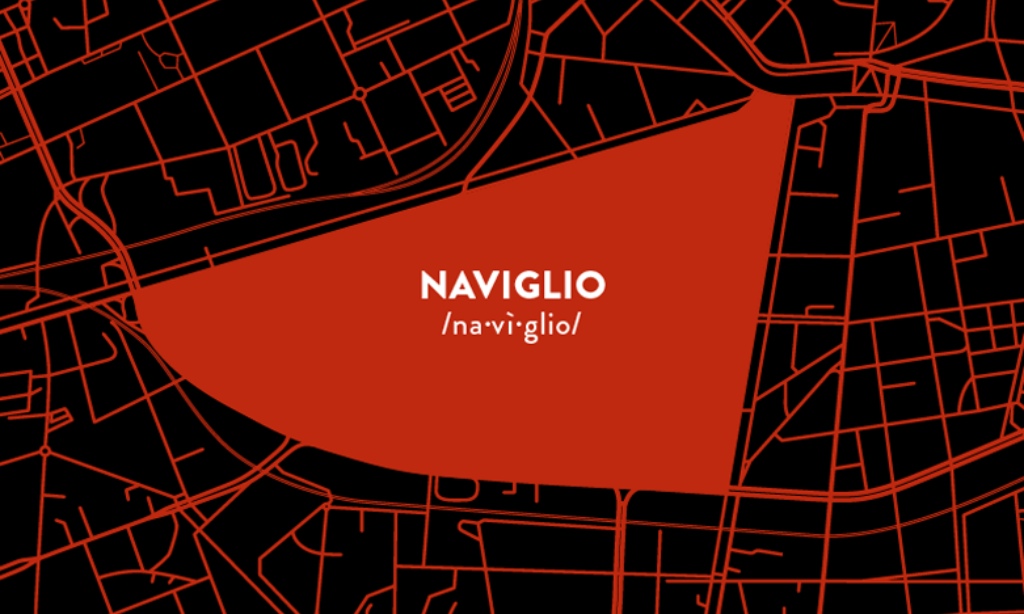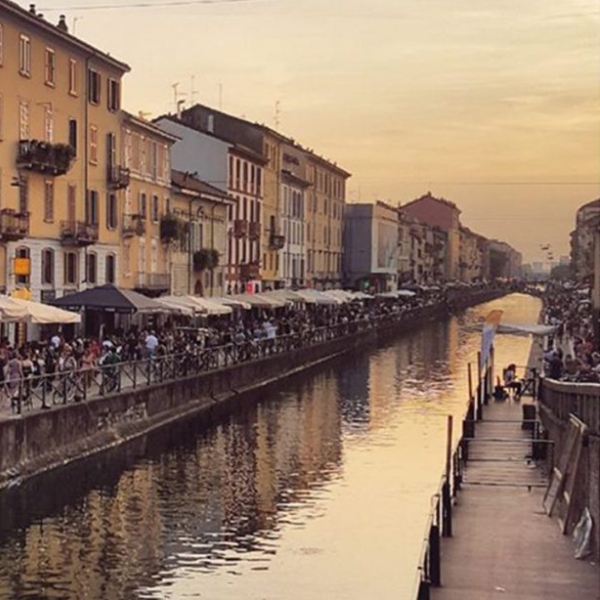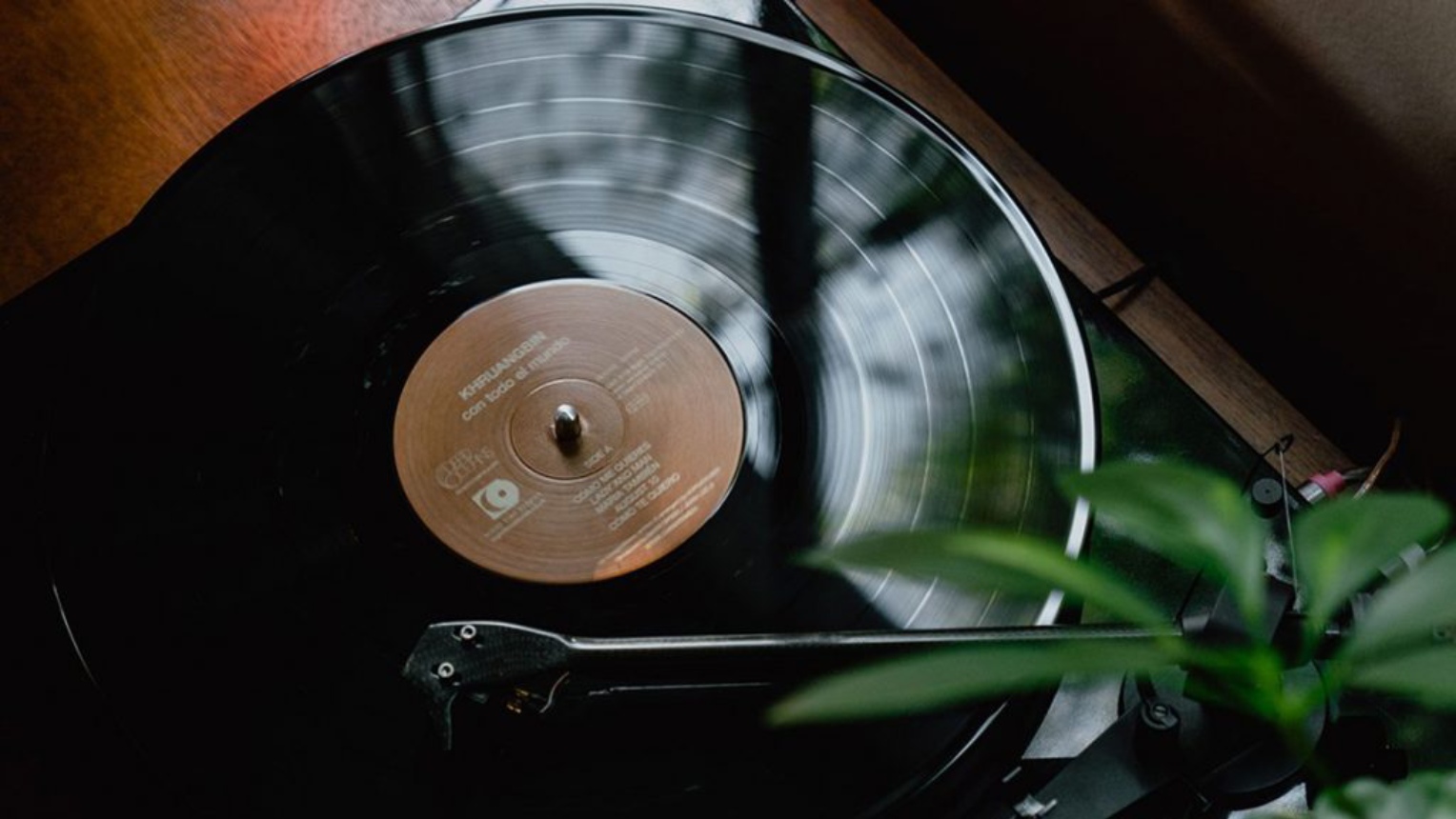Discover Milan: Naviglio

Our tour goes on in one of the most lively and suggestive neighborhoods of the city. Let’s take a stroll on the banks of the Naviglio!
History
Here we are, in the Navigli district. Before becoming one of the buzziest areas of Milan, it used to be a long and navigable system of canals. It connected Lake Como and Lake Maggiore, so Milan had an access to Switzerland and to the Northwest Europe. The construction of the first navigable stretch of the Naviglio dates back to the second half of the XII century.
This system of channels, nicknamed “Lombardy’s Venice”, served for the transport of various goods, from food to marble for the construction of the Duomo. In order to ensure correct water flow, the Navigli have their own dam system, perfected by the great Leonardo da Vinci, at the request of Ludovico Il Moro (lord of Milan). Navigation on the Naviglio was an excellent method of transport, abandoned only from the first half of the nineteenth century when the system was replaced by railways.
Did you know that even today it is possible to travel on the same route, thanks to special boats? It is an experience you cannot miss!
Nowadays
The so-called “Navigli” of Milan include Naviglio Pavese, Naviglio Grande and Naviglio Martesana, which are three of the five canals that have survived to the present day.
At the beginning of Naviglio Pavese we find “Ponte del Trofeo” (Trophy Bridge). It takes its name from a monument built in Spanish times, commonly called the “Fuentes Trophy”. This appellative originates from the governor of the State of Milan, Don Pietro Enriquez de Acevedo Conte di Fuentes, who revived this area.

Leaving the Ponte del Trofeo behind, you will find an ex-brick kiln on the right. It is now home to the Mu-Mi: Ecomuseo Milano Sud, currently open only for virtual tours.
Walking for another 500 meters, you will find the Conchetta, the first lock of the Naviglio Pavese: a kind of “lift” for boats sailing the canal. It allows to overcome the existing height difference of almost 3 meters.
On the left of the Conchetta, there is the Sacrestia Farmacia Alcolica, a very picturesque and curious place,. There, you can enjoy excellent drinks and a delicious aperitif. The unusual name of this building (translated to English it’s Alcholic Sacresty Pharmacy) is due to a story that dates back in the early 1900s. It is said, in fact, that the building was a “Pleasure House” for Milanese gentlemen. Then, at the end of the 1950s, it was transformed into a pharmacy. Today’s owners, to pay homage to this legend, wanted to revive the past atmosphere. In fact, the place is furnished with vintage fabrics, peculiar sofas and chandeliers.
Alleys and the “Darsena”
Here you can also find a historic alley: “Vicolo dei Lavandai”. It owes its name to the lavandai (launderers) who, in 1800, took care of washing the clothes. They constituted a real trade association. Here you can also admire “el fosset“, a stream that receives water of the Naviglio Grande. It was the exact place where the clothes were soaped on a wooden board, called “brellin“.
At the confluence of the Naviglio Grande and the Naviglio Pavese, there is the “Darsena” (dock). It is the place of connection of the entire system of canals and the area where boats once landed. The word Darsena, of Arab origin, means “harbor”. It indicates the covered shelter of boats. In the past, this area was full of places for sailors such as taverns, pubs and inns.
The last boat docked at Darsena on March 30, 1979 and, since then, left over boats were converted into floating bars and restaurants. Today, this nice area is the home of the Municipal Market and a place to meet for youngsters.
The “Alzaia”
You might have noticed the presence of the term “alzaia” (towpath) in the name of many streets. But why? The alzaie were very important streets that flanked all the five Milanese canals. Back in time, horses, donkeys and oxen used to tow boats against the current, along the various canals. The term “alzaia” actually identifies the rope that was used to tow boats: one end was tied to the boat, the other to the animal.
Nowadays, these streets perfectly blend tradition and modernity. The New York Times included them amongst the 12 most beautiful ones in Europe.
The courtyards
Together with the beautiful streets that attract both locals and turists, here in the Navigli district you can also find many nice home courtyards. Immersed in a magic atmosphere, they are amazing hidden spots in which time stands still. They usually have well-kept gardens characterized by a lush and varied vegetation, and small enchanting art galleries.
The surroundings: art & museums
If you keep walking, surrounded by beautiful climbing plants, you will find the Engraving Center. Here, you can relive the magic of a now lost manual art.
Right on Naviglio Grande, in via Magolfa 32, there is also the “Alda Merini’s House of Arts-Space“. The space on the first floor houses the reconstruction of the poet’s bedroom. The furniture and personal effects are authentic, taken from her previous house near Porta Ticinese.
In addition, not far from here, in Tortona, there arae several museums where once there were old factories or farmhouses. The most famous and visited one is “Armani Silos“. Originally the granary of a big international company, today it is the fashion art museum dedicated to the famous stylist Giorgio Armani, opened to celebrate 40 years of his career.
Then, a very historic place: the “MUDEC”: the Museum of Cultures, located in Via Tortona 56. It opened in the 1990s thanks to the contribution of the Municipality of Milan.
Armani Silos’ innovative neighbor is “BASE“, located in Via Bergognone 34. It is a great project of cultural contamination between arts, businesses, technology and social innovation. A true cultural pole.

Food & leisure
Every last Sunday of the month, there is the Antiques Market. Here, you can find all kinds of vintage objects: furniture, ceramic objects, clothes, books and many other.
For a bike ride, just coast the Naviglio Martesana. It leads you outside Milan, across parks, fields and villages, wonderful villas and ancient farmhouses.
Over the years, the canals have also become a glamorous area of Milan. There are many places where you can experience the Milanese nightlife. For a typical aperitivo, just stop at Capetown Café or at Fonderie Milanesi. This used to be an artistic foundry located in a courtyard, now transformed into a very nice place.
For dinner, what about an authentic risotto at Trattoria Madonnina? It is open since 1908. If, on the other hand, you are a meat lover, you should book a table at Antica Marmeria. Then, why not to stop at Al Coccio, for a selection of home brew beers? Another place for great cocktails surely is Rita, with a very nice location.
For a well-deserved midnight snack, Panificio Toscano Romagnoli, open 24/7.
And, now…time to go home!
If you decide to bring home a croissant (or brioche, as we say in Milan), for the next day’s breakfast, you know that the perfect match is a good espresso! With our series of automatic Gaggia Naviglio machines you will live an amazing coffee experience.
Resistant, reliable and really immediate to use, they are perfect to make authentic Italian espressos, prepared as if you were at the bar!
Just like the Milanese Navigli, there are three models in this range, designed for the needs of different consumers. Not only excellent espresso with freshly ground coffee beans: the focus is also on cappuccino. Naviglio Deluxe, Naviglio Milk and Naviglio Black are in fact ideal for preparing this great classic of the Italian barista tradition, in three different ways.
Deluxe has an auto-cappuccinatore with a cyclonic chamber, Milk is equipped with the innovative one-touch CappinCup system – and Black has the “pannarello” for budding home baristas.
The Naviglio range embodies true quality and passion. A few simple gestures, to live a truly special experience, in the comfort of home.
 Truly Italian Roots
Truly Italian Roots